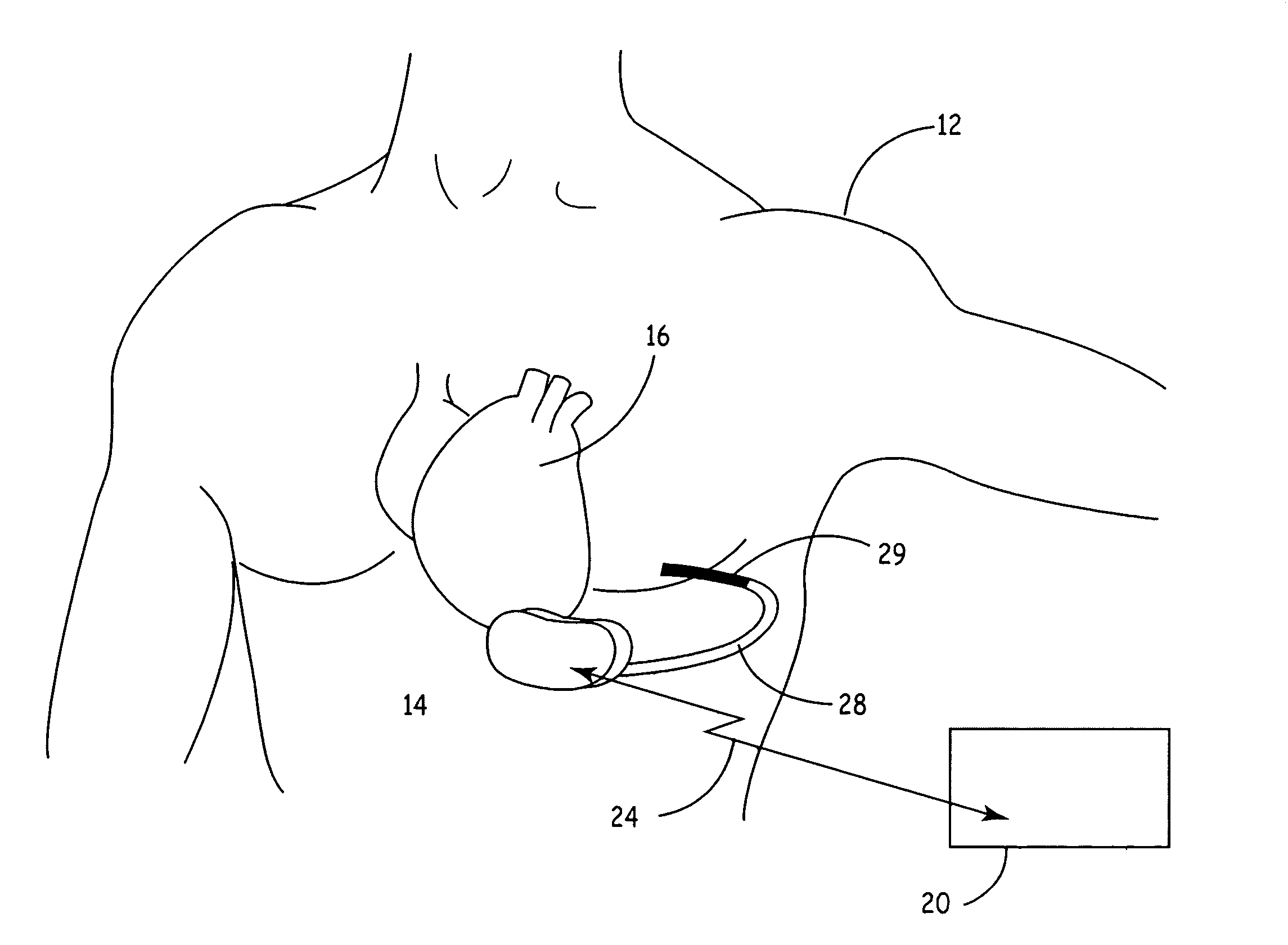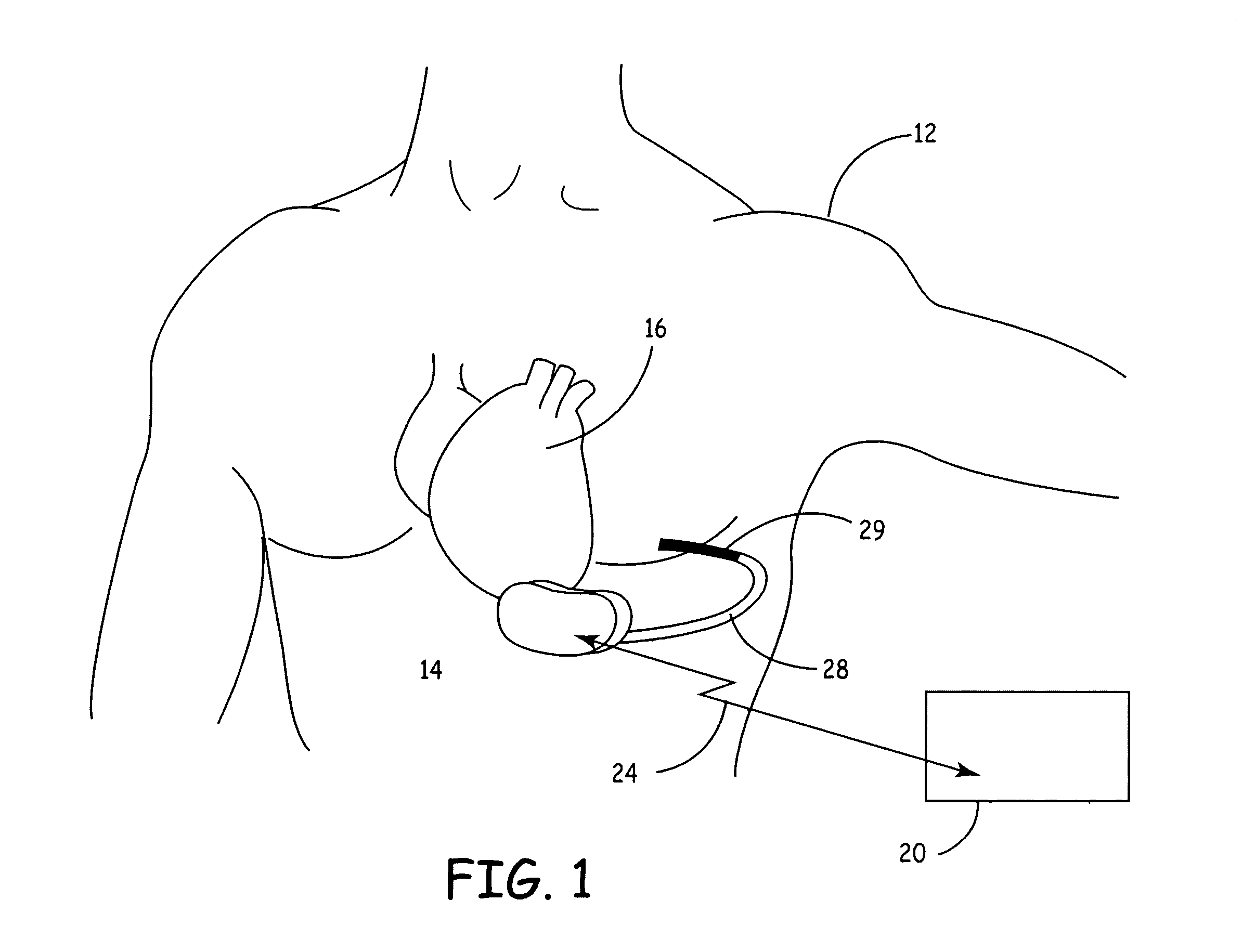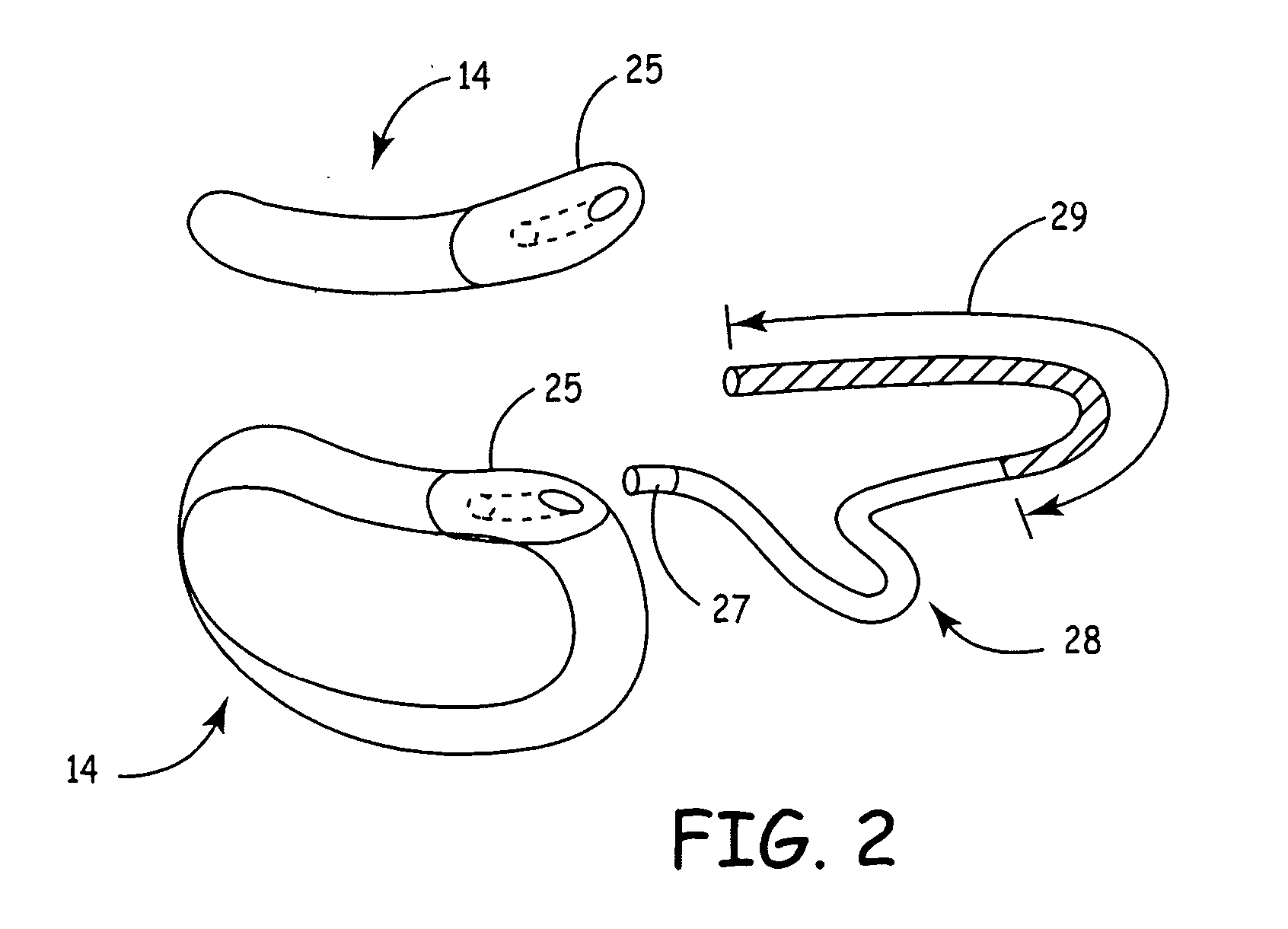Level crossing detector for detecting noise, sinus rhythm and ventricular fibrillation in subcutaneous or body surface signals
a detector and subcutaneous or body surface technology, applied in the field of subcutaneous icd, can solve the problems of prohibitively expensive difficult devices to implant in some patients, and high cost of imds and implant procedures, so as to improve the detection of arrhythmias
- Summary
- Abstract
- Description
- Claims
- Application Information
AI Technical Summary
Benefits of technology
Problems solved by technology
Method used
Image
Examples
Embodiment Construction
[0022]FIG. 1 shows SubQ ICD 14 implanted in patient 12. The SubQ ICD 14 is subcutaneously implanted outside the ribcage of patient 12, anterior to the cardiac notch. Further, a subcutaneous sensing and cardioversion / defibrillation therapy delivery lead 28 in electrical communication with SubQ ICD 14, is tunneled subcutaneously into a location adjacent to a portion of a latissimus dorsi muscle of patient 12. Specifically, lead 28 is tunneled subcutaneously from the median implant pocket of SubQ ICD 14 laterally and posterially to the patient's back to a location opposite the heart such that the heart 16 is disposed between the SubQ ICD 14 and the distal electrode coil 29 of lead 28.
[0023] Further referring to FIG. 1, programmer20 is shown in telemetric communication with SubQ ICD 14 by RF communication link 24 such as Bluetooth, WiFi, MICS, or as described in U.S. Pat. No. 5,683,432 “Adaptive Performance-Optimizing Communication System for Communicating with an Implantable Medical D...
PUM
 Login to View More
Login to View More Abstract
Description
Claims
Application Information
 Login to View More
Login to View More - R&D
- Intellectual Property
- Life Sciences
- Materials
- Tech Scout
- Unparalleled Data Quality
- Higher Quality Content
- 60% Fewer Hallucinations
Browse by: Latest US Patents, China's latest patents, Technical Efficacy Thesaurus, Application Domain, Technology Topic, Popular Technical Reports.
© 2025 PatSnap. All rights reserved.Legal|Privacy policy|Modern Slavery Act Transparency Statement|Sitemap|About US| Contact US: help@patsnap.com



